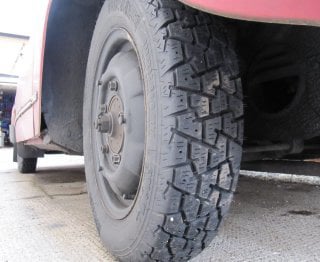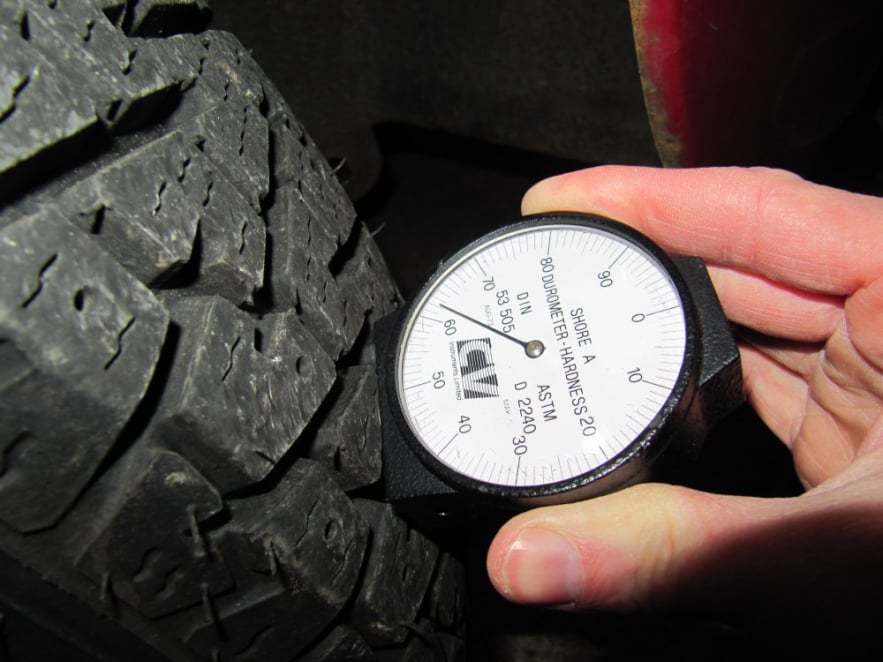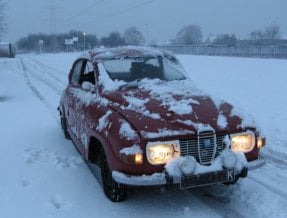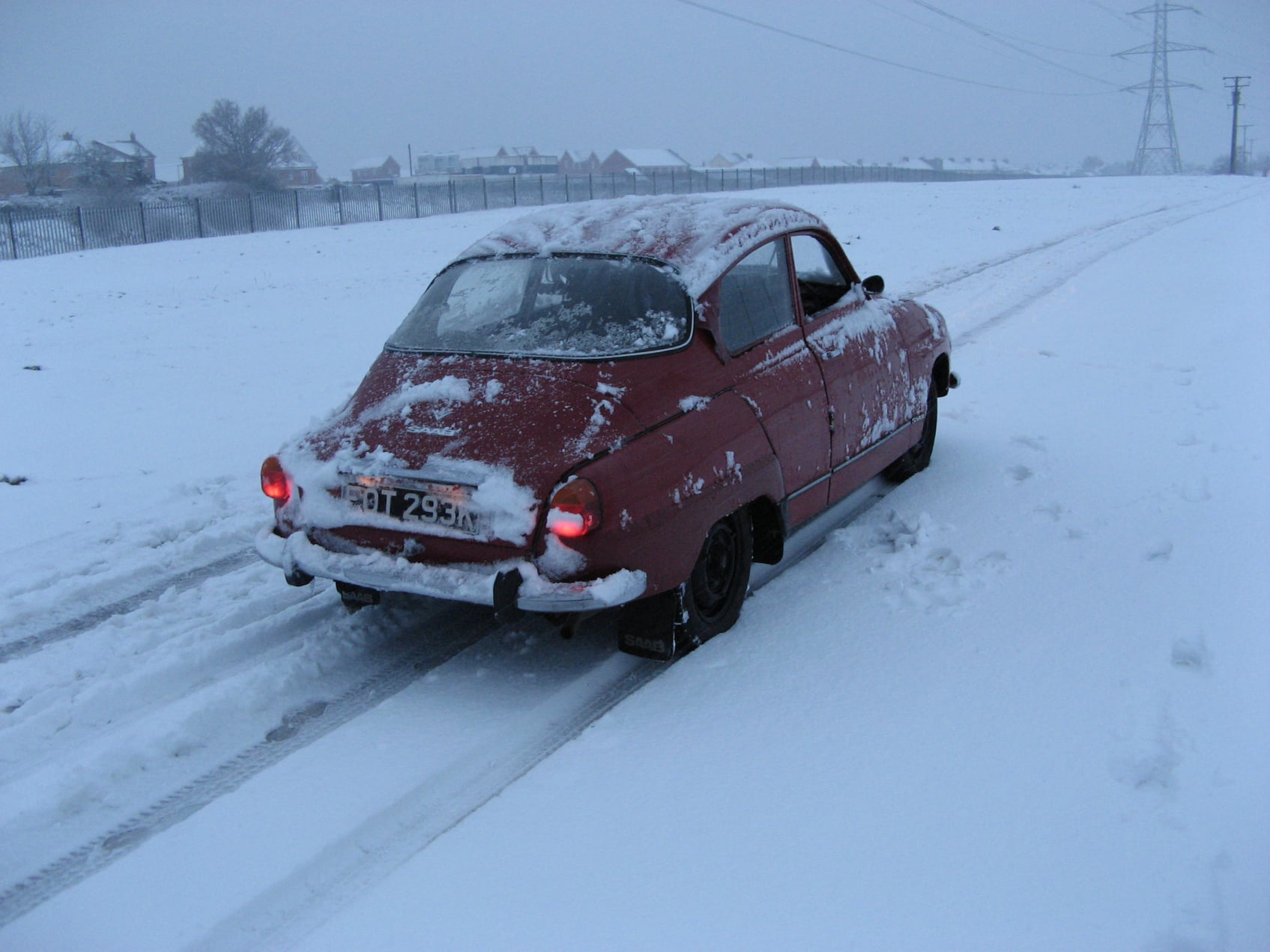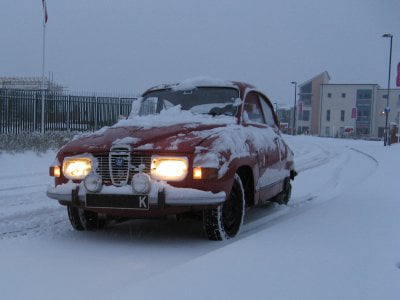
Snow Tyres on a Saab 96
Winter 2010 was cold and snowy in England; and the Saab required some new tyres. A set of four Vredestien mud and snow155 x R15 tyres were purchased, to assess their road holding in these winter conditions and throughout the following year.
